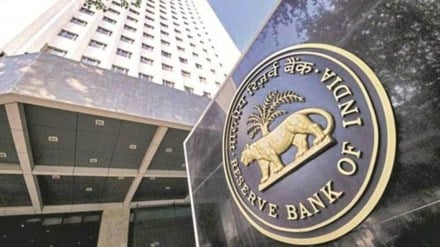By Indranil Sen Gupta
The Reserve Bank of India’s (RBI’s) Monetary Policy Committee (MPC), as was expected, paused on Thursday, with Governor Shaktikanta Das vowing to keep an Arjuna’s eye on inflation. I think that the next course of RBI action will critically depend on what the US’s Federal Reserve does, and, whether El Nino strikes or not.
The base case has the RBI cutting 100 basis points (bps) from October with growth as well as inflation slowing. If an El Nino poses a 200 bps risk to inflation, as is believed, the RBI may have to postpone the first cut to December.
If the Fed dot plot, on June 14, raises the terminal rate to, say, 5.75%, the RBI would likely hike to 6.75% by August and later cut 125 bps from February 2024.
I continue to believe that the course of monetary policy that the RBI (or any other emerging market central bank) follows now critically hinges on the Fed. If the Fed does pause, the RBI should be able to cut policy rates by 100 basis points from October, if rains are normal, and December, if there is an El Nino.
Also read: Multi-cloud app security: F5 looks at India
At the same time, the worry is that core US CPI inflation is not coming off from 0.4% month-on-month which, on an annualised basis, is over twice the Fed’s 2% inflation target. If the Fed has to raise rates again to, say, 5.75%, the RBI can be expected to hike the rate to 6.75% on August 10 and then cut by 125 basis points from February 2024.
After all, rupee assets are already less attractive than the dollar assets: For example, 5.1% Fed funds + 1.8% premia are higher than the 6.25% call rate; 6.25% call rate – 1.8% premia is lower than 5.1% Fed rate.
This begs the question: Can the RBI really cut as fast as we think? Growth is expected to slip to 5.5% in FY24, below the RBI’s 6.5% forecast, reducing pricing power. In fact, growth has averaged at 5% levels from July 2022 to March 2023.
The very Fed tightening that is forcing the RBI to raise rates is also hurting export demand by slowing global growth.
In fact, the real lending rates have jumped by over 1,000 bps since April 2022 to a 7-year high. Just as importantly, CLSA assesses that an US recession costs about 100 bps in terms of a hit to India’s GDP.
Inflation should also come off to 5.2% in FY24, well within the RBI’s 2-6% mandate. This, of course, assumes a normal monsoon. Although the RBI’s inflation target is 4+/-2%, it will cut rates as long as inflation is around India’s growth-maximising inflation rate, that is estimated 5.5-6%.
Given that the RBI has kept monetary expansion on such a tight leash, this is unlikely to raise inflation expectations.
Finally, the dollar can be expected to peak at 1.20 to the euro by March 2024 as the FX market begins to price in Fed rate cuts that the Fed dot plot expects in 2024. This will provide the RBI the required headroom to bring down domestic rates.
The rupee should claw its way back to levels of 79 to the dollar by March 2024. Can the rupee really appreciate? We are not taking the full benefit of the dollar weakness, as the RBI is expected to continue to recoup FX reserves in a world of such high uncertainties. The present weakness in the rupee is largely seasonal as industrial production and exports slow down in April-September due to the summer and the monsoon.
As the weather improves, production/exports will pick up to support the rupee. Foreign bond/loan redemptions are also heavy, at over $5 billion in June.
CLSA had forecast the 10-year government bond yield at 7% by March 2024 and, in fact, it is already there. A further downside from here is not anticipated, unless a deep US recession prompts the Fed to cut rates this year itself.
We think the market is implicitly pricing in our 5.5% terminal repo rate in the easing cycle, as the premium of the 10-year bond over the call money rate is 150 bps on an average.
While the high fiscal deficit does lead to an excess supply, of over Rs 5 trillion of government paper, the RBI is expected to conduct large scale open market operations to buy bonds if FX flows are muted.
An El Nino, that drives rain clouds away from India, can impact the monsoon and the autumn kharif harvest (3.5% of GDP). This poses a 200+ bps upside risk to CLSA’s 5.2% FY24 inflation forecast: 5% swing in food prices hit inflation by 200+ bps.
Risks are certainly rising. The Australian weather bureau declared an El Nino ‘Alert’, with the Southern Oscillation Index (SOI) at -20.5, dropping well below the -7 threshold. The RBI MPC is expected to push the first rate cut to December from October if El Nino pushes inflation above the 2-6% mandate.
It is only former Governor Bimal Jalan who has cut during droughts. Inflation targeting makes such discretionary action even more difficult.
The writer is Head of India Research at CLSA
Views are personal
